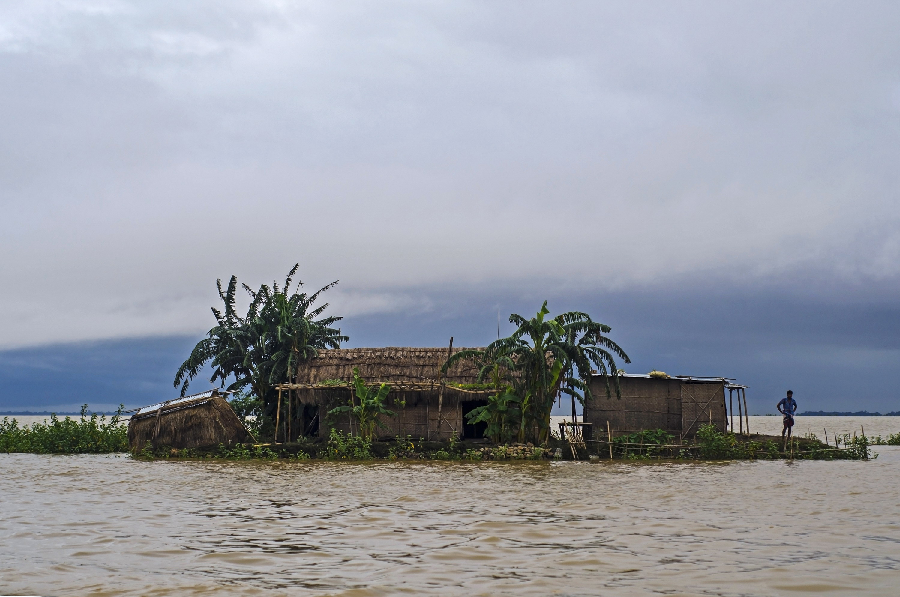Bangladesh, a low-lying delta nation, is one of the most vulnerable countries to climate change. With rising sea levels, frequent cyclones, flooding, and increasing temperatures, the nation faces significant environmental, economic, and social challenges. This article explores whether Bangladesh is prepared to tackle climate change, the key obstacles it faces, and the innovative solutions being implemented to build resilience.
The Climate Change Threat in Bangladesh
Bangladesh’s geography makes it particularly susceptible to climate impacts. The country’s flat terrain, dense population, and dependence on agriculture amplify the risks. Here are the primary climate-related threats:
- Rising Sea Levels: According to the Intergovernmental Panel on Climate Change (IPCC), sea levels could rise by up to 1 meter by 2100, potentially submerging 17% of Bangladesh’s land, displacing millions.
- Cyclones and Storms: The Bay of Bengal is a hotspot for tropical cyclones, with events like Cyclone Sidr (2007) and Amphan (2020) causing widespread devastation.
- Flooding and River Erosion: Monsoon floods and riverbank erosion affect millions annually, damaging crops, homes, and infrastructure.
- Salinity Intrusion: Coastal areas face increasing soil and water salinity, threatening agriculture and freshwater availability.
- Heatwaves and Droughts: Rising temperatures are impacting crop yields and public health, particularly in urban areas.
These challenges highlight the urgent need for Bangladesh to strengthen its climate resilience.
Challenges to Climate Change Preparedness
Despite efforts to combat climate change, Bangladesh faces several hurdles:
1. Limited Financial Resources
Climate adaptation and mitigation require substantial funding. While Bangladesh has made strides, its economy struggles to allocate sufficient resources for large-scale infrastructure projects like embankments or renewable energy systems.
2. Population Density
With over 160 million people in a small land area, Bangladesh faces challenges in relocating vulnerable communities or providing adequate infrastructure to protect them from climate impacts.
3. Infrastructure Gaps
While embankments and cyclone shelters have been built, many areas still lack robust infrastructure to withstand extreme weather events. Rural regions, in particular, are underserved.
4. Agricultural Dependence
Around 60% of Bangladesh’s population relies on agriculture, which is highly sensitive to climate variability. Floods, droughts, and salinity reduce crop yields, threatening food security.
5. Policy and Coordination Issues
Although Bangladesh has progressive climate policies, implementation is often hampered by bureaucratic inefficiencies, lack of coordination, and limited local-level capacity.
Solutions and Progress Toward Climate Resilience
Bangladesh has taken significant steps to address climate change, earning global recognition for its innovative approaches. Below are key solutions and initiatives:
1. National Climate Policies
The Bangladesh Climate Change Strategy and Action Plan (BCCSAP) outlines a roadmap for adaptation and mitigation. The government has also established the Bangladesh Climate Change Trust Fund (BCCTF) to finance climate projects.
2. Community-Based Adaptation
Local communities are being empowered through initiatives like:
- Floating Gardens: Farmers in flood-prone areas use water hyacinth rafts to grow crops, ensuring food security during floods.
- Climate-Resilient Crops: The introduction of saline-tolerant and drought-resistant crop varieties, such as BRRI Dhan 78 rice, supports agricultural resilience.
3. Infrastructure Development
- Cyclone Shelters: Over 4,000 multi-purpose cyclone shelters have been built, providing safety during storms and serving as schools or community centers during normal times.
- Embankments and Dams: The government is constructing and reinforcing embankments to protect coastal areas from flooding and erosion.
4. Renewable Energy Adoption
Bangladesh is investing in renewable energy to reduce its carbon footprint. The Solar Home Systems (SHS) program has provided electricity to over 6 million households, reducing reliance on fossil fuels.
5. International Collaboration
Bangladesh actively participates in global climate forums, securing funding from organizations like the Green Climate Fund and World Bank for projects like the Delta Plan 2100, a long-term strategy to manage water resources and protect against sea-level rise.
6. Early Warning Systems
Improved weather forecasting and early warning systems have reduced cyclone-related deaths. Mobile alerts and community networks ensure timely evacuations.
Is Bangladesh Ready?
While Bangladesh has made commendable progress, it is not fully prepared for the escalating impacts of climate change. The scale of the challenge requires sustained investment, international support, and innovative solutions. Key areas for improvement include:
- Scaling up infrastructure to cover all vulnerable regions.
- Enhancing local governance and community involvement in climate projects.
- Increasing access to climate finance for adaptation and mitigation.
Conclusion
Bangladesh’s proactive approach to climate change, from community-based adaptation to national policies, sets a global example. However, the magnitude of the challenges demands accelerated action. By continuing to invest in resilient infrastructure, sustainable agriculture, and renewable energy, Bangladesh can build a more climate-resilient future. International cooperation and increased funding will be critical to support these efforts.
Call to Action: Stay informed about climate change impacts and support initiatives that promote sustainability in vulnerable regions like Bangladesh. Together, we can contribute to a more resilient planet.
